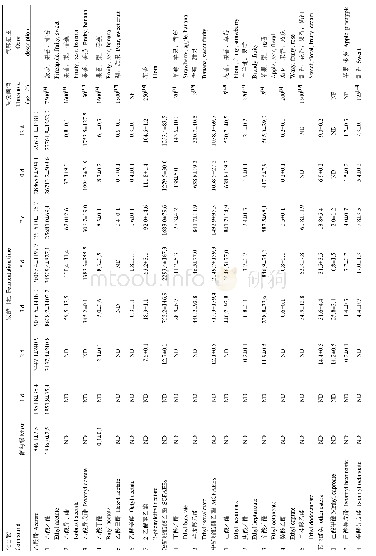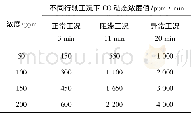《Table 4 Ratios of pollutant concentrations during sand-dust weather events compared to those seen u
 提示:宽带有限、当前游客访问压缩模式
提示:宽带有限、当前游客访问压缩模式
本系列图表出处文件名:随高清版一同展现
《"Characteristics of air pollution events over Hotan Prefecture at the southwestern edge of Taklimakan Desert,China"》
The ratios of hourly averaged concentration(i.e.,the averaged pollutant concentration of sanddust weather events divided by the averaged pollutant concentration of the same variety during the corresponding time period under clear sky conditions)of all events are calculated for the area over Hotan Prefecture between 1 February 2015 and 31 July 2015(Table 4)to examine whether,or not,these characteristics describing the variation in gaseous pollutant concentrations during the three types of sand-dust weather events are common.The concentrations of particulate matter that derive from sand-dust weather events are greater than that of the cases under clear sky conditions.Indeed,of the weather events considered here,dust storms exhibit the highest particulate matter concentration values;PM10 and PM2.5 concentrations in this case are twelve times and ten times higher than under clear sky conditions,respectively.Similarly,PM10 and PM2.5 concentrations are three to four times and two to three times higher than under clear sky conditions during blowing and floating dust events,respectively.During sand-dust weather events,the concentrations of gaseous pollutants are also lower than under clear sky conditions;this is especially the case in dust storms,events characterized by the lowest concentrations of gaseous pollutants.These kinds of storms actually effectively remove and rapidly diffuse gaseous pollutants.Finally,it is noteworthy that this study does reveal a number of discrepancies in terms of the impacts of sand-dust weather events on gaseous pollutant;concentrations of SO2 and NO2 are lower in the three sand-dust patterns than under clear sky conditions,while CO levels are lower in dust storms and blowing dust events but are higher in floating dust.Concentrations of O3 are lower in floating and blowing dust events and higher in dust storms.
| 图表编号 | XD0020361200 严禁用于非法目的 |
|---|---|
| 绘制时间 | 2018.10.01 |
| 作者 | LI Jingxin、WANG Shigong、CHU Jinhua、WANG Jiaxin、LI Xu、YUE Man、SHANG Kezheng |
| 绘制单位 | State Key Laboratory of Severe Weather, Chinese Academy of Meteorological Sciences、Sichuan Key Laboratory of Plateau Atmosphere and Environment, College of Atmospheric Sciences, Chengdu University of Information Technology、Gansu Key Laboratory of Arid Cli |
| 更多格式 | 高清、无水印(增值服务) |





